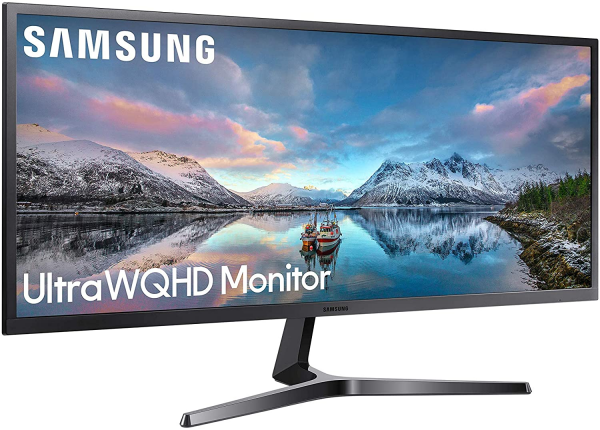Samsung
Samsung S34J550WQU: the most affordable 34-inch UWQHD widescreen on the market
Aprox. 366€
See specificationsWith a price of less than € 400, the Samsung S34J550 is quite simply the most affordable 34-inch UWQHD monitor on the market. It remains to be seen what are its strengths and weaknesses. Make way for the test!
Positive points
Good image quality after a few adjustments.
High contrast.
Definition UWQHD comfortable on this 34 inch panel.
Reduced display delay.
FreeSync compatible.
Low power consumption.
Bad points
No height adjustment.
No USB hub.
Limited connectivity.
Our review
Presentation
The Samsung S34J550WQU has a 34 inch (approx. 86 cm) VA panel with a comfortable UWQHD resolution of 3440 x 1440 px. To reduce the price, this screen offers the minimum in terms of ergonomics and therefore a simple tilt adjustment. However, it supports FreeSync (adaptive frequency) up to 75 Hz.
This monitor is sold for around € 500 and sometimes even below € 400, making it the most affordable 34-inch monitor on the market. Its closest competitor is the Iiyama ProLite XUB3490WQSU. Sold for around € 500, the latter has an IPS panel, a height-adjustable stand and a USB hub.
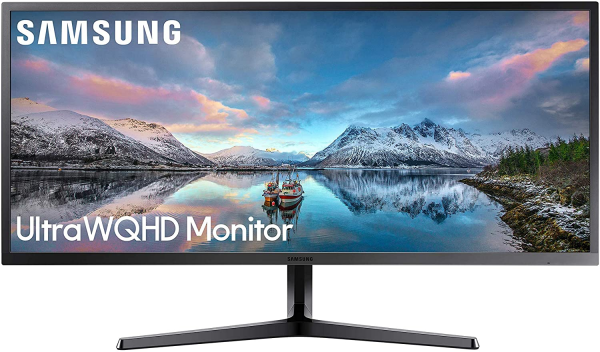
Ergonomics
The Samsung S34J550 monitor [/ media]
The Samsung S34J550 has a fairly classic design. The edges of the screen are fine and the finishes are good for a monitor in this price range.
The Y-shaped foot - signature of the Korean brand - is wide and takes up a lot of space on the desk, but it stabilizes the 34-inch panel. The external power supply is very compact, which avoids cluttering the underside of the desk with an external box.
This monitor is content with a single adjustment: that of the inclination between -1.5 ° and + 15 °. It lacks the height adjustment which is far from anecdotal for office use.
The back of the chassis is made entirely of good quality ribbed black plastic, which gives this monitor a premium look. The connection is oriented downwards. Samsung offers a basic cable routing system on the foot that allows you to group them there. The screen is compatible with VESA 100 x 100 mm mounts.
The connection consists of two HDMI inputs, a DisplayPort input and a headphone output. That's all. Samsung goes to the basics, which allows to offer such a tight price.
The clickable joystick is always the most pleasant way to navigate the settings. Pressing the button turns on the monitor. Then, move the cursor up to change the source, mode (presets) and access the settings (brightness, contrast, sharpness, overdrive, gamma, temperature, etc.). The menus are readable and navigation is done quickly.
On our 140 x 60 cm desk, the 34-inch screen is finally comfortable. This monitor is more compact than two 27-inch monitors used side by side while providing the same workspace. The definition UWQHD on a diagonal of 34 inches is simply excellent, whether for games or office automation where you can display two windows next to each other while maintaining good readability. The foot depth of 24 cm is contained, which allows you to place this monitor on any desk.
By lowering the brightness to 23 to obtain a white at 150 cd / m², the Samsung S34J550WQU consumes 22 W, or a relative consumption of 53 W / m². To date, it is quite simply the most economical screen tested in our laboratory. It displays a relative consumption much lower than the average consumption of the monitors tested (100 W / m²). At the minimum of the brightness (16 cd / m²), it consumes 14 W. At the maximum (320 cd / m²), the consumption goes to 30 W.
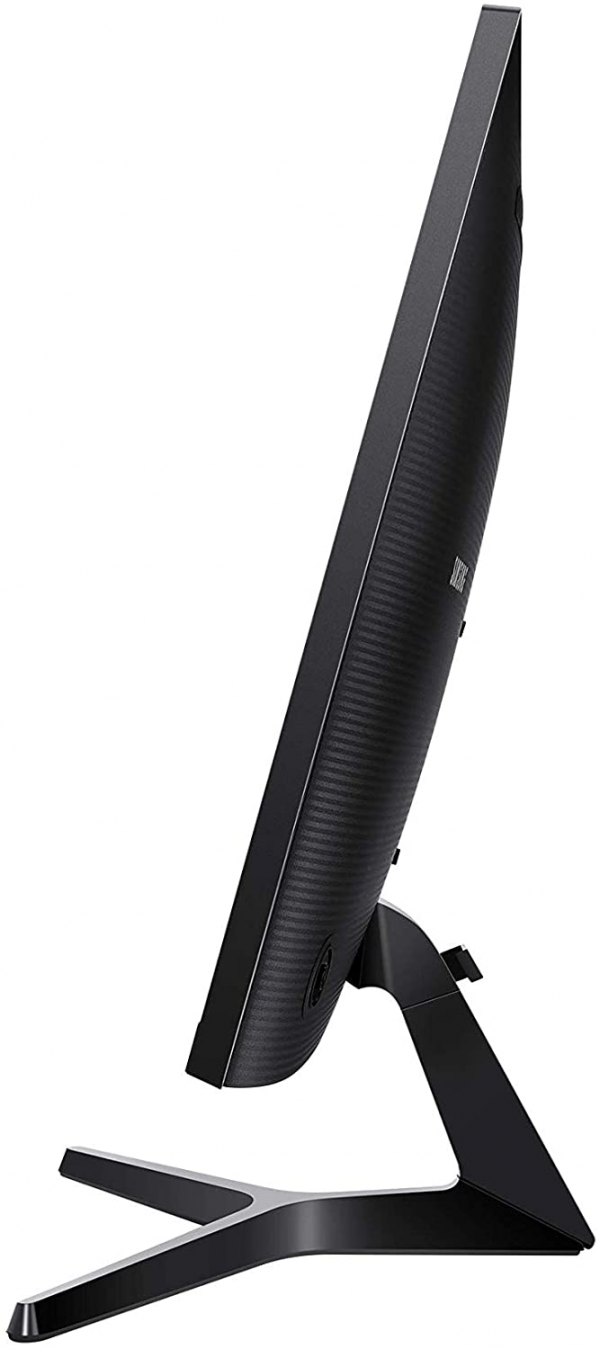
Colors and contrast
Right out of the box, the Samsung S34J550WQU displays a good image. The temperature curve lacks a bit of stability over the entire spectrum, but the average measured at 6,850 K is not very far from the 6,500 K of the video standard. By default, the gamma curve is rather stable and the measured average of 2.1 is close to the reference value (2.2). With an average delta E measured at 3.4, the colors cannot be considered as perfectly faithful to those sent by the source. Red and green display visible drift for a seasoned eye. Recall that beyond a delta E of 3, the human eye can perceive the difference between the colors requested and the colors displayed.
In order to improve the image quality, we lowered the brightness to 23 to obtain a white close to 150 cd / m² then we set the gamma to "mode 2" and the temperature to "normal". With these settings, the temperature curve is identical, with an average of 6,840 K and the gamma curve is now set to the reference value of 2.2. The decrease in brightness also improves color fidelity (average delta E, which drops to 3.1).
Calibrating the screen using a probe makes it possible to smooth the temperature and gamma curves which are based on the reference values. The color rendering is now faithful (average delta E at 2.1), but red and green keep a delta E close to 6. You can download this color profile by following this link.
Equipped with a VA panel, the Samsung S34J550WQU offers excellent native contrast. Black drops to 0.04 cd / m², which translates into a contrast ratio close to 3,900: 1. Samsung approaches here the most contrasting VA monitors, such as the Textorm TX32 or the Philips BDM4037UW whose contrast ratio exceeds 4000: 1. This monitor therefore delivers very deep blacks which allow you to make the most of movies and TV series.
The average difference in white homogeneity is 7% over the entire 34-inch panel. This is very good value for a monitor of this diagonal. We did not find any light leaks in the corners or any clouding ("cloud effect") on our test model. VA technology offers slightly narrower viewing angles than IPS panels. So be careful not to look at this monitor from an angle greater than 40 °.
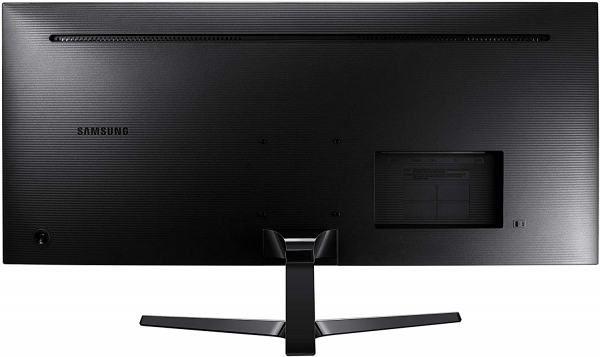
Reactivity
The Samsung S55J550 does not use pulse width modulation (PWM) to adjust its brightness and therefore does not flicker. This modulation plays on a variation of intensity of the LEDs in a cyclic way, which can be perceived as flickering by certain sensitive people; in some rare cases, this phenomenon can induce eyestrain and headaches. There is no such problem on this monitor. The screen of Samsung also offers a filter of the light in a software way (variation of the temperature).
It also manages FreeSync between 36 and 75 Hz and therefore works optimally when the graphics card sends between 36 and 75 images per second. It is a fairly small range, but suitable for the greedy definition of the screen (UWQHD) which already requires a high-performance graphics card (AMD Radeon RX 5700 XT or Nvidia GeForce RTX2070 Super). In this operating range, fluidity is at the rendezvous and the image does not suffer from tearing problems or jerks (micro-stuttering). Remember that FreeSync / AdaptiveSync now works with Nvidia graphics cards
We measured the remanence time at 10 ms with the overdrive ("response time" in French in the OSD) set to the fastest value called "accelerated". This value makes it possible to limit ghosting ("ghost image effect") while avoiding the effect of reverse ghosting. Finally, we measured the delay in the display (input lag) at 10.6 ms (at 60 Hz). There is therefore no lag between the action with the mouse and its repercussion on the screen.
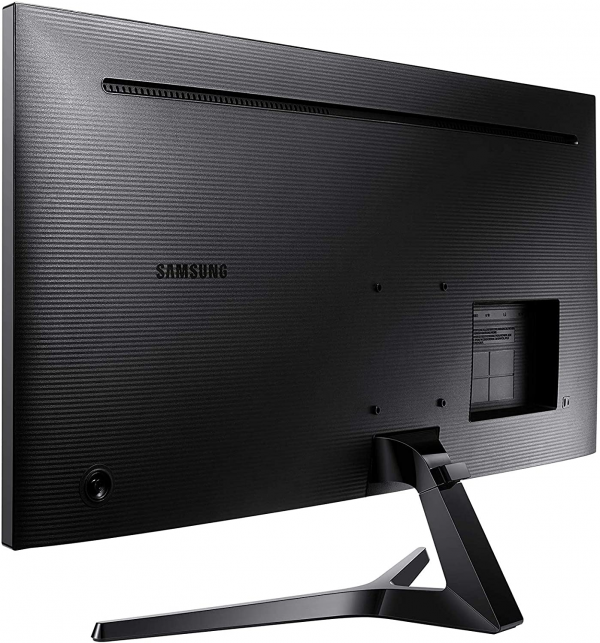
Conclusion
The Samsung S34J550 is a very good 34 inch screen. Versatile, it is suitable for those looking for a large screen for office use, as well as for those who want a versatile screen for multimedia (movies, TV series, video) and even for players who are not looking for absolute performance. It only suffers from its limited ergonomics which makes it lose a star, but it is certainly one of the best value for money of the moment in this size.
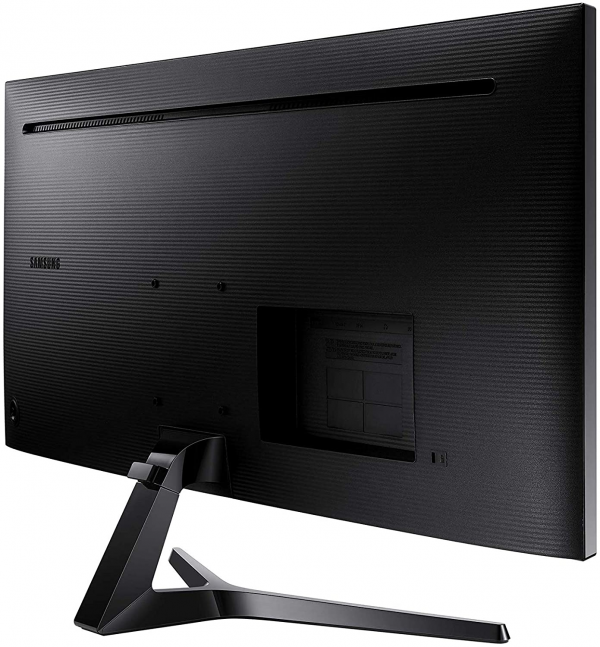
Specifications

